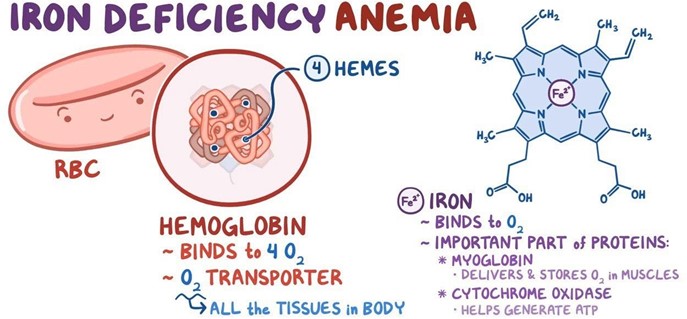A nurse in a clinic is assessing a 7-month-old infant. Which of the following indicates a need for further evaluation?
Uses a pincer grasp
Has a fear of strangers
Shows preferences towards foods
Babbles one-syllable sounds
The Correct Answer is A
Choice A: Using a pincer grasp indicates a need for further evaluation, as it is a developmental milestone that is usually achieved by 9 to 10 months of age. A pincer grasp is the ability to pick up small objects using the thumb and index finger. A 7-month-old infant should be able to use a raking grasp, which is the ability to scoop up objects using all fingers.
Choice B: Having a fear of strangers does not indicate a need for further evaluation, as it is a normal and expected behavior for a 7-month-old infant. A fear of strangers is a sign of attachment and recognition of familiar and unfamiliar faces. A 7-month-old infant may cry, cling, or turn away from strangers.
Choice C: Showing preferences towards foods does not indicate a need for further evaluation, as it is a normal and expected behavior for a 7-month-old infant. Showing preferences towards foods is a sign of individuality and taste development. A 7-month-old infant may accept or reject certain foods based on their flavor, texture, or appearance.
Choice D: Babbling one-syllable sounds does not indicate a need for further evaluation, as it is a normal and expected behavior for a 7-month-old infant. Babbling one-syllable sounds is a sign of language and communication development. A 7-month-old infant may make sounds such as "ba", "da", "ga", or "ma".
Nursing Test Bank
Naxlex Comprehensive Predictor Exams
Related Questions
Correct Answer is A
Explanation
Choice A: This instruction is correct, as iron supplements can cause a change in the color and consistency of stools, making them dark, green, or black. This is not a sign of bleeding or infection, but a normal side effect of iron therapy. The parents should be informed of this possibility and reassured that it is harmless.
Choice B: This instruction is incorrect, as iron supplements should not be administered at bedtime, but rather one hour before or two hours after meals. This is because iron absorption is reduced by food, especially dairy products, antacids, or calcium supplements. The parents should be instructed to give the medication on an empty stomach or with a small amount of food if it causes nausea.
Choice C: This instruction is incorrect, as iron supplements should not be given with milk, as milk contains calcium, which can interfere with iron absorption and reduce its effectiveness. The parents should be instructed to avoid giving milk or other dairy products within two hours of the medication.
Choice D: This instruction is incorrect, as iron supplements should not be administered at mealtimes, but rather one hour before or two hours after meals. This is because iron absorption is reduced by food, especially dairy products, antacids, or calcium supplements. The parents should be instructed to give the medication on an empty stomach or with a small amount of food if it causes nausea.

Correct Answer is C
Explanation
Choice A: Shingles is a viral infection that causes a painful rash, usually on one side of the body. It is caused by the same virus that causes chickenpox. Shingles is not related to tinea pedis, which is a fungal infection.
Choice B: Valley fever is a fungal infection that affects the lungs and can cause flu-like symptoms, such as fever, cough, and chest pain. It is caused by inhaling spores from a fungus that grows in dry soil. Valley fever is not related to tinea pedis, which affects the skin of the feet.
Choice C: Athlete's foot is a common name for tinea pedis, which is a fungal infection that affects the skin between the toes and on the soles of the feet. It can cause itching, burning, scaling, and cracking of the skin. Athlete's foot is contagious and can be spread by direct contact or by sharing shoes, socks, or towels.
Choice D: Fever blister is another name for a cold sore, which is a small blister that forms on or near the lips. It is caused by a type of herpes virus that can be transmitted by kissing or sharing utensils. Fever blister is not related to tinea pedis, which is a fungal infection.
Whether you are a student looking to ace your exams or a practicing nurse seeking to enhance your expertise , our nursing education contents will empower you with the confidence and competence to make a difference in the lives of patients and become a respected leader in the healthcare field.
Visit Naxlex, invest in your future and unlock endless possibilities with our unparalleled nursing education contents today
Report Wrong Answer on the Current Question
Do you disagree with the answer? If yes, what is your expected answer? Explain.
Kindly be descriptive with the issue you are facing.
